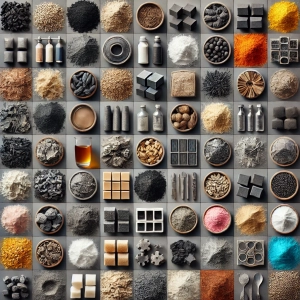Una nueva herramienta para capacitar a tu personal: Un curso en línea sobre colección de polvo
30 DE ENERO DE 2025 – Después de más de dos años de redacción, diseño gráfico y pruebas en el campo, estamos emocionados de anunciar nuestro nuevo curso de entrenamiento en línea sobre sistemas de colección de polvo, el primero de su tipo. Esta es la versión en línea de la capacitación presencial que nuestros expertos han brindado por más de 40 años en México, Estados Unidos y Canadá. Sin embargo, gran parte de su contenido ha sido actualizado y revisado con las últimas tecnologías y avances en colección de polvo. Este curso ha sido diseñado meticulosamente para Jefes de Planta y Mantenimiento, Ingenieros, Gerentes de Proyecto, Gerentes de Medio Ambiente, Salud y Seguridad, y personal de Compras.
¿Te gustaría ver un adelanto de nuestro curso online?
¡Mira el video a continuación!
Aprendizaje dinámico a tu ritmo

El curso está diseñado para ser atractivo y dinámico, asegurando que el aprendizaje no solo sea informativo, sino también agradable.
El curso está diseñado para ser atractivo y dinámico, asegurando que el aprendizaje no solo sea informativo, sino también agradable. Nuestros programas están estructurados en ocho lecciones, cada una con diagramas y gráficos fáciles de entender, videos, materiales descargables, enlaces a artículos relacionados y cuestionarios interactivos. Las primeras lecciones establecen la base con los conceptos más sencillos, mientras que las siguientes profundizan en parámetros más complejos de la colección de polvo. La primera lección de este curso de formación en colección de polvo está disponible de forma gratuita,permitiéndote obtener un adelanto del valioso conocimiento e información que adquirirás a lo largo del programa. ¡Échale un vistazo aquí!
Nuestros 4 programas de capacitación
En Baghouse.com, entendemos que cada empresa tiene necesidades únicas cuando se trata de entrenar a su personal.
Por eso, ofrecemos cuatro programas de capacitación flexibles que se adaptan al horario y estilo de aprendizaje de tu equipo:
► Capacitación presencial
- ✧ Esta opción combina una auditoría e inspección de tu sistema de colección de polvo con una clase dinámica impartida por nuestros expertos. Es ideal para equipos que buscan asesoramiento personalizado en sus propias instalaciones.
► Capacitación virtual
- ✧ Únete a un instructor en vivo a través de Zoom para sesiones interactivas diseñadas para abordar tus inquietudes específicas. Es lo más cercano a una capacitación presencial sin salir de la oficina.
► Capacitación online auto-guiada
- ✧ Aprende a tu propio ritmo con nuestros cursos autoguiados. Esta opción te permite acceder al curso en cualquier momento y lugar, ideal para personal con agendas ocupadas.
► Capacitación combinada
- ✧ Este programa único combina el aprendizaje autoguiado en línea con sesiones en vivo en Zoom de preguntas y respuestas al final de cada lección. Es lo mejor de ambos mundos: flexibilidad con el respaldo de expertos.
Nuestra capacitación brinda conocimientos sobre los principios clave de los sistemas de colección de polvo, dotando a tu equipo con las habilidades necesarias para optimizar las operaciones de tu planta. A continuación, un adelanto de lo que aprenderán:
- ✦ Identificar cada tipo de colector y describir su función básica
- ✦ Conocer los diferentes estilos de colectores y sus aplicaciones adecuadas
- ✦ Aprender las opciones de filtros y cómo funcionan
- ✦ Identificar parámetros clave de diseño
- ✦ Diagnosticar problemas operativos comunes
- ✦ Realizar inspecciones y auditorías del sistema
¿Ofrecen descuentos para grupos?
¡Sí! Para hacer la capacitación aún más accesible, Baghouse.com ofrece precios con descuento para inscripciones grupales, lo que la convierte en una excelente oportunidad para instalaciones que desean capacitar a varios empleados. ✔ 5 o más empleados → 10% de descuento ✔ 10 o más empleados → 20% de descuento ✔ 20 o más empleados → 30% de descuento. Este esquema de precios por volumen asegura que todo tu equipo pueda beneficiarse de nuestra capacitación experta mientras optimizas tu inversión. Pregunta por un descuento especial para tu empresa.
¿Por qué inscribirte en este curso?
Al finalizar esta capacitación, contarás con los conocimientos prácticos y habilidades que podrás aplicar de inmediato en el sistema de colección de polvo de tu instalación. Ya sea que busques mejorar el rendimiento, reducir costos de mantenimiento o garantizar el cumplimiento normativo, este curso está diseñado para cubrir tus necesidades. Es una inversión en tu desarrollo profesional y en el futuro de tu empresa.
¡Inscríbete hoy y da el primer paso para ser un experto en los sistemas de colección de polvo con la capacitación de Baghouse.com!





















 ⦿ Cement Plants:
⦿ Cement Plants:  ⦿ Waste Incineration Facilities:
⦿ Waste Incineration Facilities:  ⦿ Power Generation:
⦿ Power Generation:  ⦿ Metallurgical and Processing Industries:
⦿ Metallurgical and Processing Industries: 












 Other dusts are inherently toxic and should be avoided as much as possible due to their severe health risks:
Other dusts are inherently toxic and should be avoided as much as possible due to their severe health risks:





